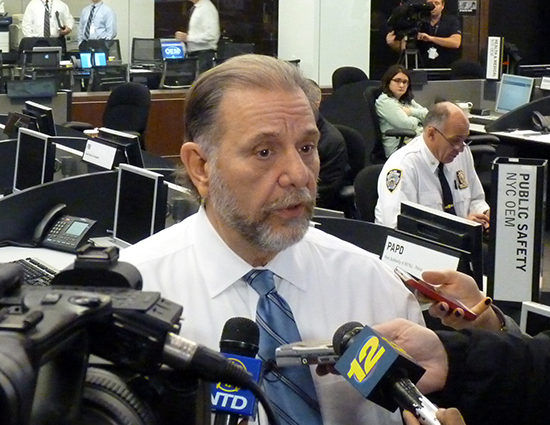Disaster drill at Brooklyn OEM preps for nuclear blast in Manhattan
Planning for the worst

OEM Commissioner Joseph Esposito. Photo by Mary Frost
How would the New York City and its regional neighbors react if a nuclear device went off in Midtown Manhattan?
New York City’s Office of Emergency Management ran a simulated disaster drill on Wednesday in Downtown Brooklyn to evaluate how the city’s responders could coordinate with neighboring counties and states in handling a radiological catastrophe.
Officials from local, state, and federal agencies along with private entities like the Red Cross filled the computer and media-filled Emergency Operations Center (EOC).
